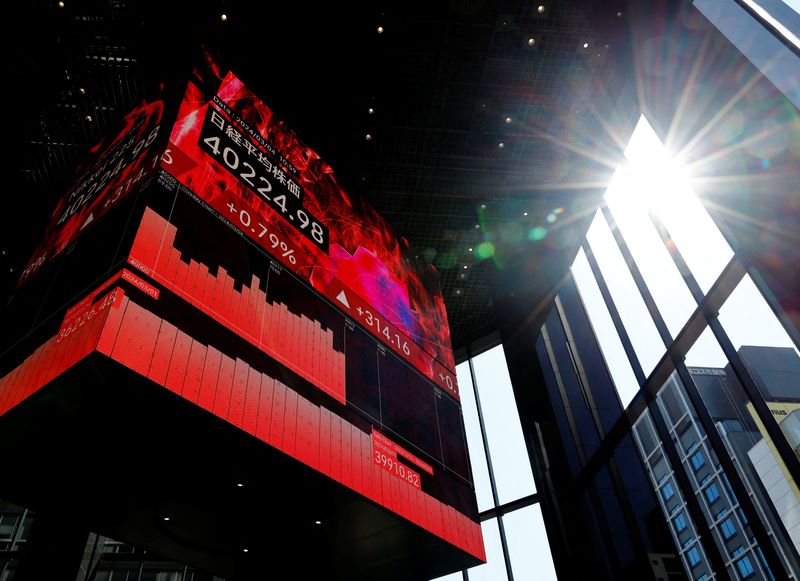By Jamie McGeever
(Reuters) - A look at the day ahead in Asian markets.
A bumper week of central bank meetings that included the U.S. Federal Reserve on Wednesday and the Bank of England on Thursday rounds off on Friday with attention fixed on Asia, and policy decisions from the Bank of Japan and People's Bank of China.
Investors in Asia go into these meetings in buoyant mood, fired up by the Fed's half percentage point rate cut and signal that rates will continue to fall over the next couple of years.
Concerns over the U.S. labor market, the nature of the U.S. economy's 'landing', and the wisdom of easing policy so much when financial conditions are already the loosest in years will surely return at some point.
But that's for another day. Right now, animal spirits are coursing through markets, and risky assets in Asia are set to close the week on a high.
The MSCI World, S&P 500 and Dow all hit new highs on Thursday, the Nasdaq jumped 2.5%, and the Russell 2000 index of U.S. small caps rose for a seventh day to register its longest winning stretch since March, 2021.
Nikkei futures are pointing to a rise of 1.6% at the open on Friday, and the MSCI Asia ex-Japan index is 1.5% away from its highest level since April 2022.
The BOJ is widely expected to stand pat and wait to see how inflation dynamics play out before deciding when to raise rates again, and as fate would have it, Japanese consumer inflation figures for August will also be released on Friday.
Economists expect the annual core rate to tick up to 2.8% from 2.7% in July. That would mark the fourth consecutive rise and lift inflation further above the BOJ's 2% target.
Political influence may be factoring into BOJ officials' thinking. Sanae Takaichi, Japan's minister in charge of economic security and a leading candidate in the ruling party's leadership race, has warned the BOJ against raising rates.
The PBOC, meanwhile, is expected to trim its main policy and benchmark lending rates on Friday, emboldened by the Fed's outsized rate cut that removed some of the risks around sharp yuan declines.
The economic challenges facing Chinese authorities are well known by now. They include a property sector crash that may take years to play out, fanning flames of deflation, and GDP growth that will probably fall well short of Beijing's 5% target.
For growth, investor sentiment and asset prices to meaningfully recover, huge monetary and fiscal stimulus will be needed. But the signs are that won't happen, and Beijing is opting for piecemeal efforts over any 'bazooka'.
Shanghai stocks are set for a rare weekly rise - only the fourth of the last 18 - but are barely 1% away from falling to levels last seen in January 2019.
Here are key developments that could provide more direction to Asian markets on Friday:
- Japan central bank decision

- Japan inflation (August)
- China central bank decision